Introduction
Accounts payable (AP) fraud is a deceptive practice that can have devastating consequences for organizations. From manipulating financial records to generating fictitious invoices, this misconduct drains financial resources and tarnishes reputations. The impact of AP fraud is far-reaching, as unexpected closures or disruptions can create opportunities for undetected fraudulent activities.
To combat these risks, organizations must establish clear expense policies, provide thorough training to employees, and implement robust anti-fraud controls. Additionally, technology and data analytics are becoming increasingly significant in fraud detection. Recognizing the red flags of AP fraud and implementing strong internal controls are crucial steps in mitigating the risk.
Furthermore, training and educating employees on fraud awareness, vendor verification and management, regular audits and monitoring, and leveraging technology for fraud detection are key best practices. By adopting these strategies, businesses can fortify their defenses against accounts payable fraud and ensure a secure and reliable business environment.
Definition and Impact of Accounts Payable Fraud
Accounts payable (AP) fraud is a deceptive practice involving manipulation of financial records and transactions within the AP process. This misconduct not only drains financial resources but also tarnishes an organization's reputation. Typical schemes include misappropriation of funds, generating fictitious invoices, and potential collusion with external parties.
The consequences of AP fraud can be severe and far-reaching. For instance, during the confusion surrounding the designation of a federal holiday to mourn the passing of President Ronald Reagan, a critical financial report went unchecked due to the sudden day off granted to federal employees. The report, usually scrutinized every Friday, contained 30 to 40 pages of issues that were overlooked, illustrating how unexpected closures or disruptions can create opportunities for undetected fraudulent activities.
In another case, the UK Post Office faced a scandal when a new computer system introduced by Fujitsu, called Horizon, falsely accused postmasters of fraud due to software errors. This example highlights the potential for technology to both aid and complicate the detection of fraudulent activities.
To combat such risks, it is crucial for organizations to establish clear expense policies and provide thorough training to employees. According to the 2022 A Report to the Nations by the Association of Certified Fraud Examiners, 42% of frauds are detected by tips, with over half reported by employees. This underscores the value of employee vigilance as a defensive measure against fraud.
Additionally, requiring documentation like receipt images for reimbursements can bolster verification processes.
During hectic periods such as year-end closing, vigilance is even more critical. Cybercriminals exploit the flurry of activity and holiday distractions to send fraudulent invoices, hoping for hasty approvals amidst the chaos. Such tactics suggest that fraud can be as opportunistic as it is planned.
The importance of effective anti-fraud controls cannot be overstated, with more than half of occupational frauds arising from inadequate internal controls or their circumvention. Technology and data analytics are becoming increasingly significant in fraud detection, as revealed in the 2024 Report to the Nations. An understanding of the typical fraudster's profile, including their organizational role and methods for concealing fraud, is also essential in developing informed defensive strategies.
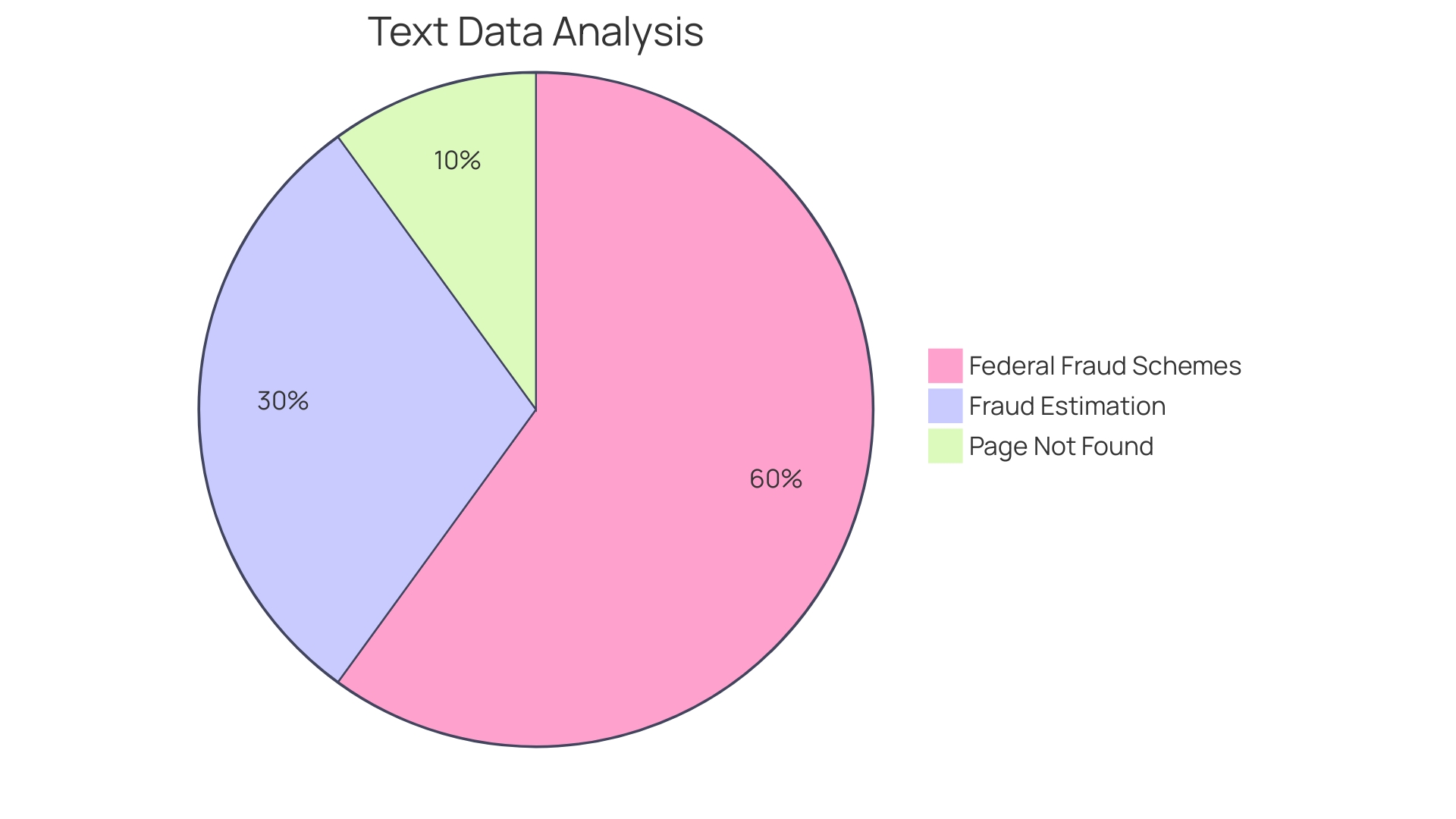
Types of Accounts Payable Fraud
With the evolving tactics of fraudsters, particularly in times of economic uncertainty, vigilance in the face of accounts payable fraud is more crucial than ever. The methods of deception are varied and sophisticated, ranging from billing schemes that manipulate invoicing systems to check tampering where fraudsters alter the payment information to redirect funds. Payroll fraud, another common scheme, often involves ghost employees or inflated hours, while expense reimbursement fraud can entail fictitious expenses or inflated costs.
Recent case studies highlight the alarming reality of these fraudulent activities. For instance, thousands of individuals have seen their Social Security benefits illicitly redirected to criminals' bank accounts. In one case, an 88-year-old woman's identity was stolen, with fraudsters altering her account details and attempting to withdraw funds.
Meanwhile, sophisticated online fraud groups like Rekk exploit refund processes, convincing customers to pay them a portion of refunded amounts for products they never returned.
Statistics underscore the need for robust anti-fraud controls, as over half of occupational frauds result from inadequate internal controls. The 2024 Report to the Nations reveals that the use of technology and data analytics is becoming increasingly significant in detecting fraudulent activities, emphasizing the importance of staying ahead with sophisticated defenses.
The problem is not just limited to consumer deception but also includes scams targeting organizations. According to Jim Quiggle from the Coalition Against Insurance Fraud, a wide variety of schemes constitute 'major league crimes,' from everyday insurance fraud to complex corporate deceptions.
The profile of a typical fraudster is revealing, often being individuals with significant tenure within an organization, using their knowledge to conceal illicit activities. This reinforces the need for continuous monitoring and updating of anti-fraud measures, making sure that even the most trusted employees are subject to oversight.
In light of these challenges, organizations must be proactive in enhancing their fraud prevention strategies, staying informed about the latest fraud trends, and implementing anti-fraud controls that can adapt to the sophisticated techniques used by modern-day fraudsters.
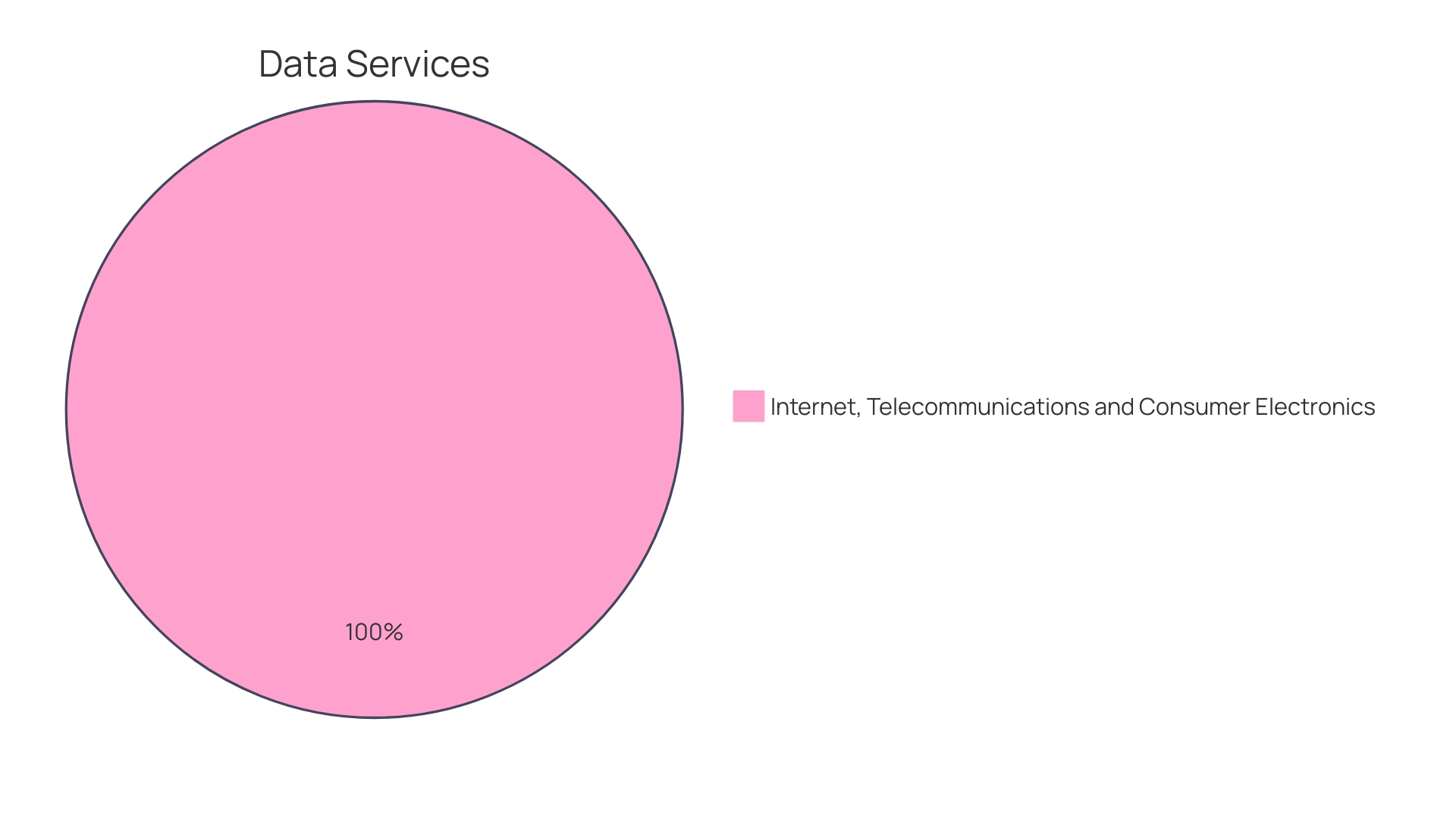
Mechanisms of Accounts Payable Fraud
Accounts payable fraud can take many shapes, from the creation of non-existent vendors to the tampering with invoice details. In one unnerving case, an 88-year-old woman's Social Security payments were siphoned off to a fraudulent account, highlighting how vulnerable individuals can be to such deceptions. Fraudsters are increasingly cunning, using tactics like modifying the last digits of bank accounts or redirecting funds to unfamiliar banks.
Additionally, scams that prey on personal connections, such as the grandparent scam, underscore the emotional manipulation used in these schemes. Fraudsters may even use advanced technology to mimic the voice of a loved one, further tricking victims into isolating themselves from potential help.
The stakes in preventing accounts payable fraud are high, as evidenced by the Report to the Nations, which cites over half of occupational frauds stem from inadequate internal controls or their bypass. Technology and data analytics are becoming pivotal in detecting fraudulent activities. To protect against such threats, businesses are advised to employ secure payment gateways, which encrypt customer information and provide a vital defense against unauthorized access.
These measures are crucial for ensuring the security of customer transactions and maintaining trust in financial processes.
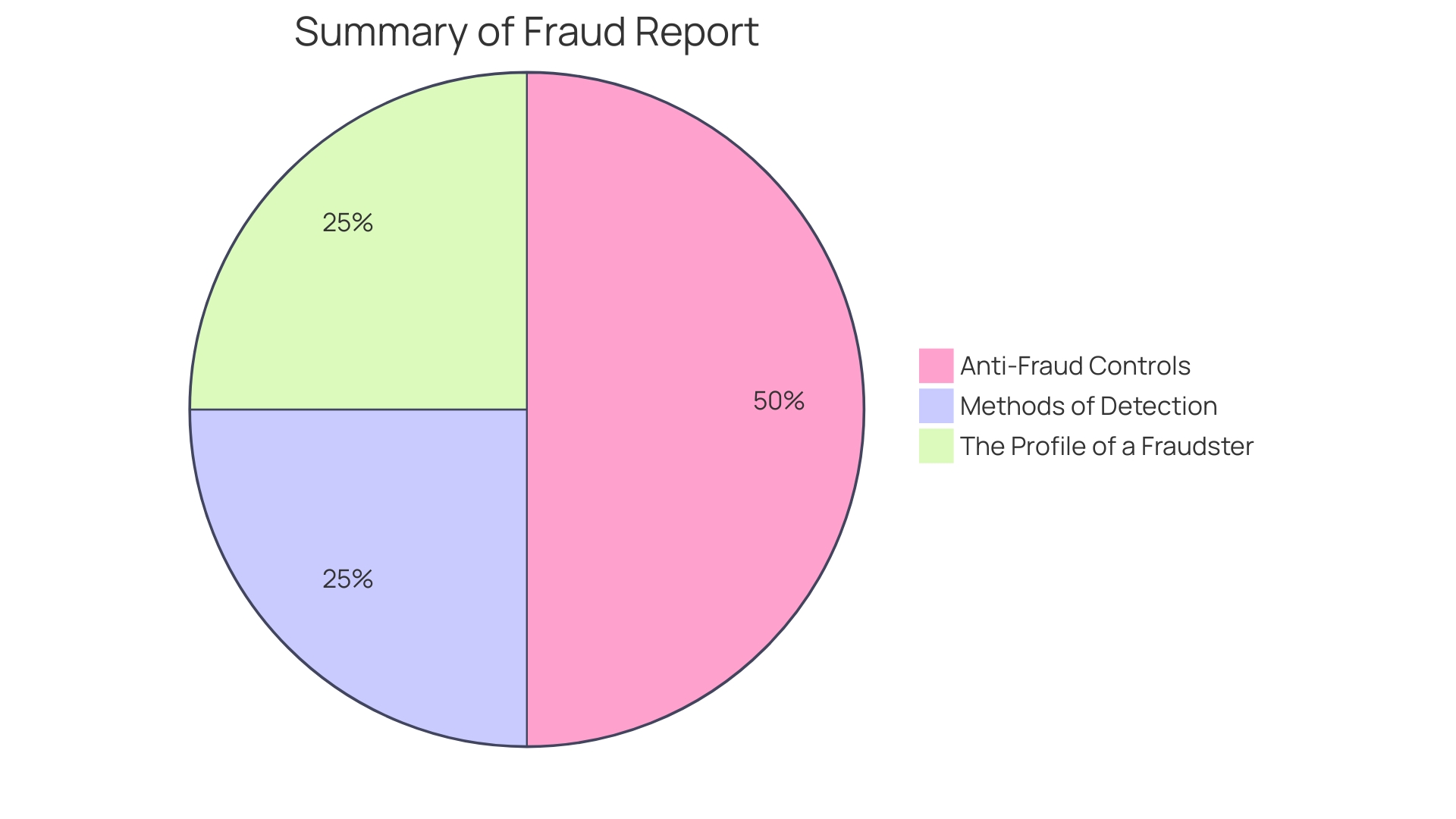
Recognizing Red Flags of AP Fraud
To mitigate the risk of accounts payable fraud, it's imperative to be proactive and recognize the early warning signs. Suspicious vendor behavior, such as irregular invoicing patterns or sudden alterations in payment details, can signal fraudulent intent. Additionally, consistent discrepancies in financial records should not be overlooked.
These discrepancies may manifest as mismatched purchase orders and invoices or unverified changes in vendor contact information. Vigilance in monitoring these activities is crucial since it can take businesses an average of 14 months to detect fraud, and recovery of lost funds is often unlikely. For instance, Chime Financial emphasizes the importance of safeguarding against unauthorized transactions, showcasing the industry's dedication to fraud prevention.
Moreover, WalletHub's report highlights the staggering impact of the MOVEit data breach, illustrating the dire consequences of compromised financial data. The rising number of fraud attempts, as indicated by recent surveys, underscores the need for stringent controls and a robust detection system to protect the financial health of businesses.
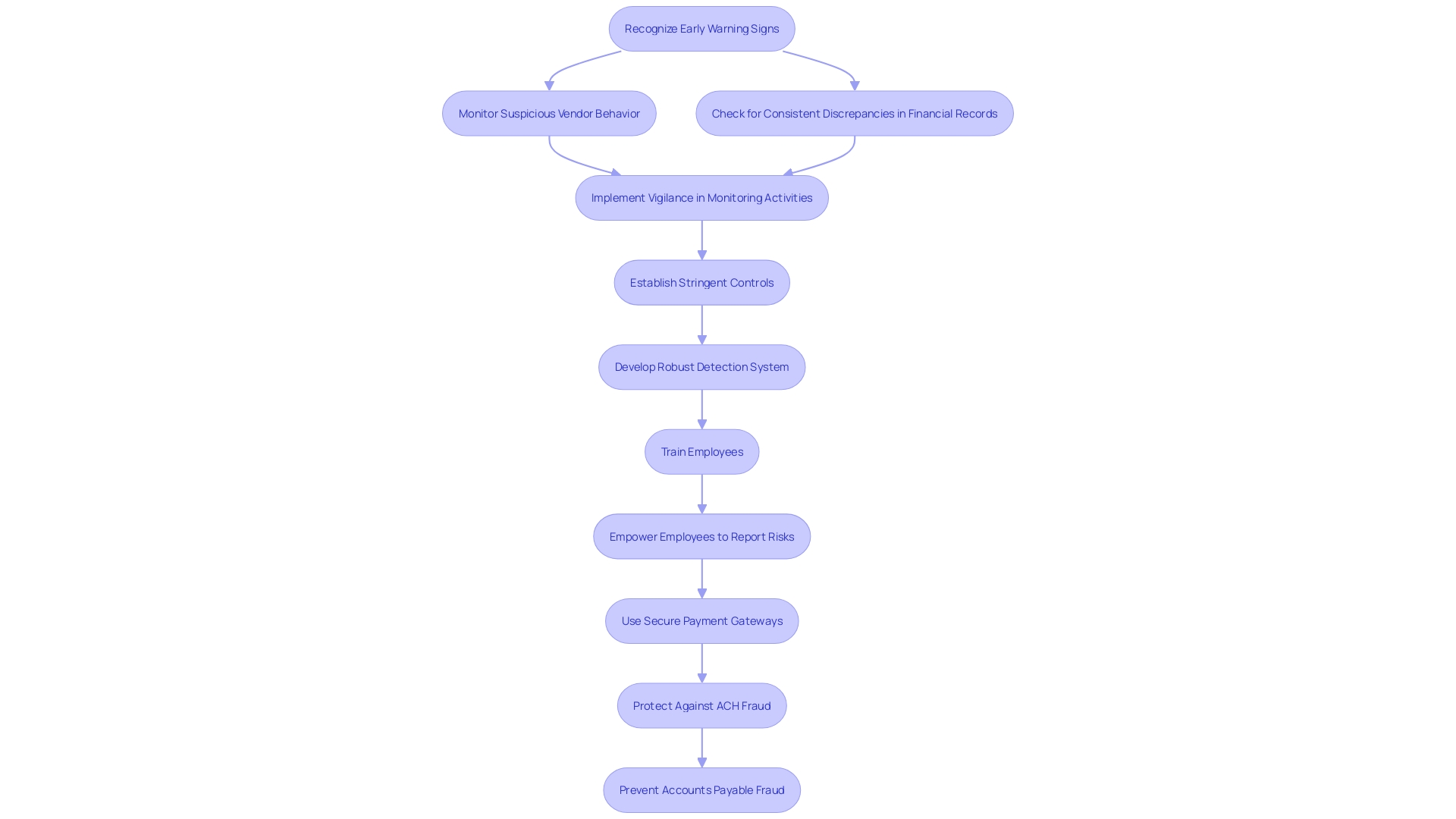
Implementing Strong Internal Controls
Mitigating the risk of accounts payable fraud is a critical challenge that requires the implementation of potent internal controls. By instituting a system of checks and balances, businesses can safeguard themselves against costly financial misappropriations. A multi-tiered approach is recommended, starting with the segregation of duties, which ensures that no single individual has control over all aspects of the financial transaction process.
Regular inspections of vendor master data are also vital, as they help identify any discrepancies or unauthorized changes that could indicate fraudulent activity.
Additionally, adopting stringent authorization and approval protocols fortifies the payment process against unauthorized transactions. These measures are supported by alarming statistics that reveal over half of occupational frauds stem from inadequate internal controls or their intentional circumvention. Such insights are reported in the 2024 'Report to the Nations,' highlighting the crucial role of vigilance and technological advancements, like data analytics, in fraud detection.
Real-world events, such as the unforeseen federal holiday following Ronald Reagan's death, underscore the necessity for consistent monitoring. The absence of personnel to review financial reports that day led to an oversight that, in a similar scenario, could facilitate fraud. The case of the United States Postal Service, with its complex payroll system, further illustrates the potential repercussions of a single error in a large-scale operation.
In the realm of fraud prevention, the Information Sharing and Analysis Center (ISAC) exemplifies a proactive strategy, promoting information exchange and collaboration to thwart identity theft tax refund fraud. This initiative, along with the annual IRS 'Dirty Dozen' list, serves as a reminder of the evolving nature of fraud schemes and the importance of staying informed and prepared.
Businesses are encouraged to draw lessons from these cases and insights, integrating robust fraud prevention measures that not only protect their resources but also maintain trust with customers and partners, thereby ensuring a secure and reliable business environment.
The Role of AP Automation in Fraud Prevention
Harnessing the power of automation in accounts payable (AP) is more than a trend; it's a strategic move towards operational excellence and fraud prevention. Pioneered by companies like PayPal, which have long emphasized the importance of scaling with a strong value proposition, today's technology offers sophisticated solutions for safeguarding financial transactions. With 66% of businesses recognizing the critical nature of AP, the shift towards automated systems is rapidly becoming a benchmark for industry best practices.
AP automation, with AI at its helm, is not just about efficiency; it's about security. Advanced software now understands invoice structures and employs layout-aware language models, significantly reducing the risk of fraud. For instance, the gaming industry has already seen the benefits of such technology, ensuring safe and rapid processing of numerous microtransactions.
Financial statement fraud, increasingly complex and difficult to detect, calls for these automated solutions. Traditional methods often fall short in the face of sophisticated schemes and the sheer volume of financial data. Automation and AI, however, excel at identifying irregularities and patterns, providing a much-needed bulwark against fraudulent activities.
By improving the visibility and precision of financial workflows, AP automation not only streamlines processes but also enables businesses to navigate the complexities of modern financial ecosystems with confidence.
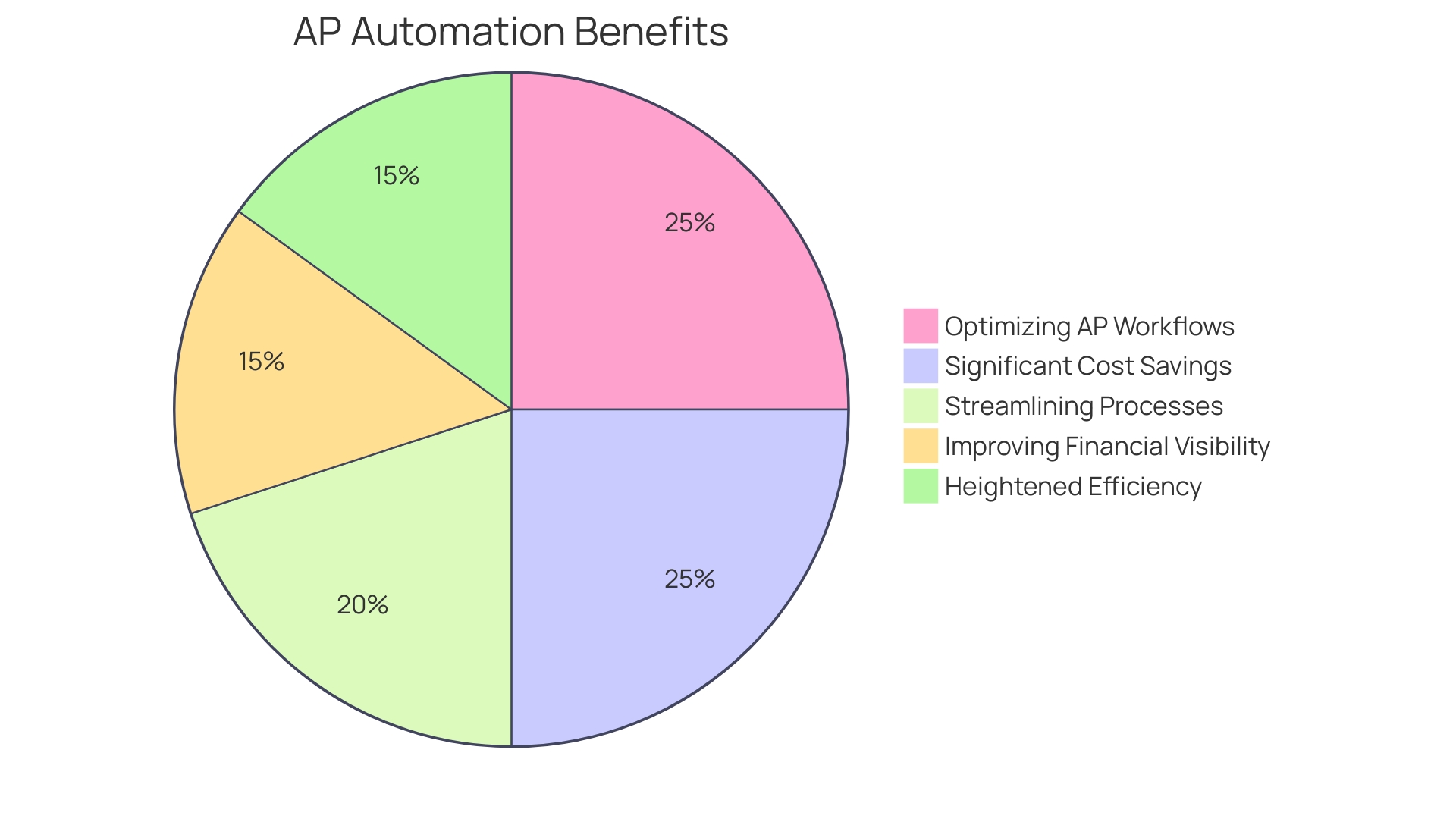
Best Practices for AP Fraud Prevention
Organizations can mitigate accounts payable fraud by implementing robust internal controls and leveraging technology. Regular fraud risk assessments identify vulnerabilities, while promoting ethical behavior and open communication encourages employees to report anomalies. For example, Elsevier's Identity Confidence Check (ICC) scrutinizes author's email domains, connections to the institution, and past conduct to validate identities.
Similarly, businesses can safeguard against fraudulent ACH transactions by employing secure payment gateways and continuously monitoring for irregularities, exceeding transaction thresholds, and shifting behavior patterns. These strategies are critical for maintaining compliance with KYC and AML regulations. Moreover, the 2024 Report to the Nations highlights that over half of occupational frauds are due to insufficient internal controls or their circumvention, emphasizing the need for vigilance and the increasing reliance on data analytics for fraud detection.
Understanding the profile of a typical fraudster, including their role and tenure within an organization, further aids in crafting targeted defenses.
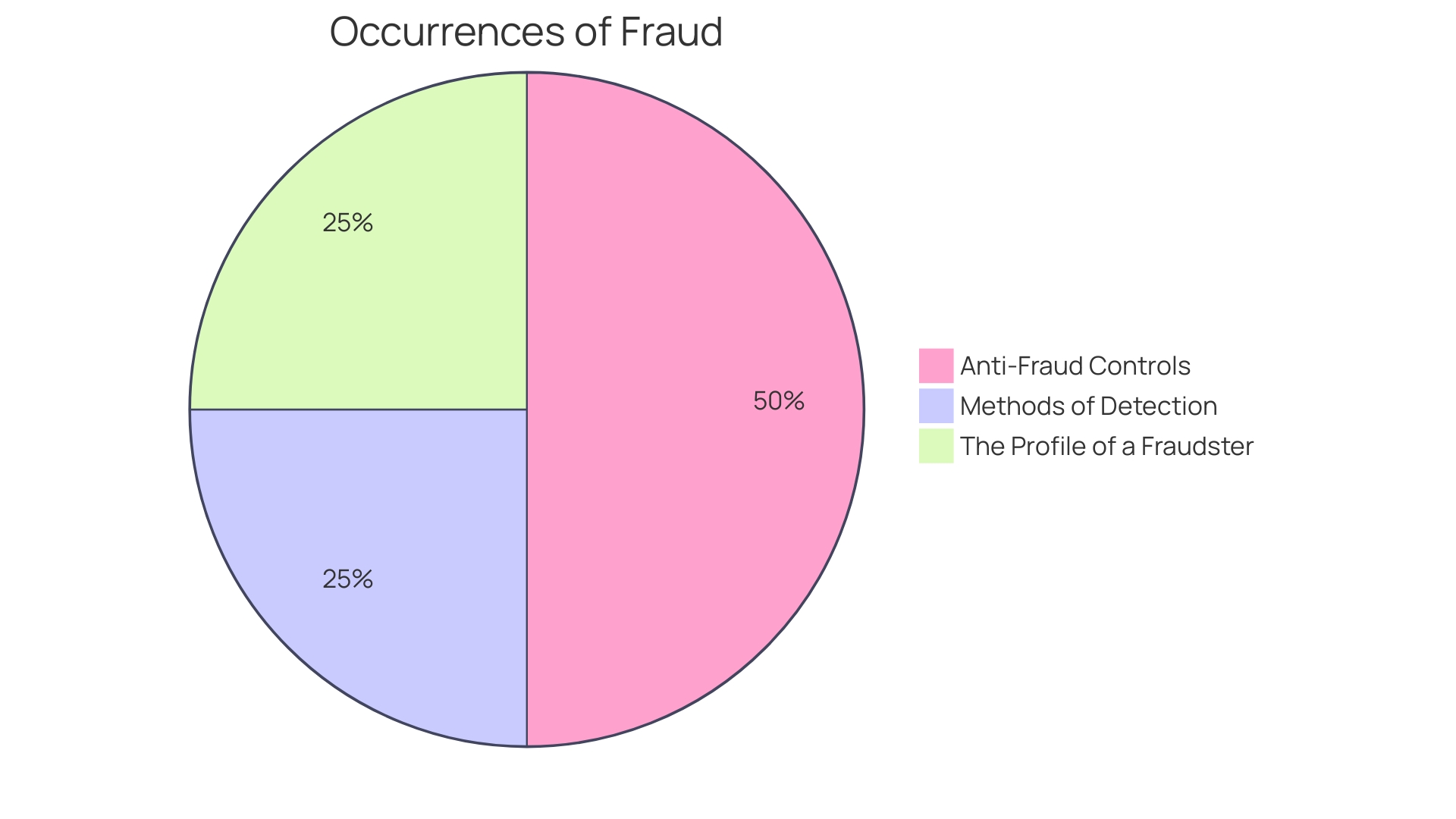
Training and Educating Employees on Fraud Awareness
Cultivating a knowledgeable workforce is paramount when it comes to mitigating fraud within an organization. Employees, when well-informed, become the frontline defense against deceptive practices. Statistics reveal a startling reality: according to the 2024 Report to the Nations, a staggering 42% of fraud cases are unearthed through employee tips, with training programs tailored to specific roles drastically enhancing this detection capability.
The digital payment solutions provider Nets exemplifies a proactive approach to employee education. They transformed dense technical data into engaging, interactive content, thereby encouraging their team to actively engage with and understand the complexities of fraud prevention. Similarly, the use of advanced technology and data analytics has proven to be a game-changer in identifying fraudulent activities, as highlighted by the same report.
This underscores the importance of integrating contemporary tools alongside traditional training methods to equip employees with the necessary skills to spot and report fraud effectively.
Moreover, the dynamic nature of fraudsters, who often possess intricate knowledge of internal systems, necessitates an ever-evolving training curriculum that addresses the latest schemes and technological advancements. Financial statement fraud schemes, for instance, have evolved to become incredibly sophisticated, leveraging both the vast amounts of data generated by modern businesses and the complexity of financial transactions to conceal illicit actions. It is imperative that detection methods keep pace, with education serving as a critical component of this process.
In essence, employee training is not just a reactive measure, but a strategic tool that fortifies an organization against financial malfeasance. With more than half of fraud incidents attributed to insufficient internal controls, as per the Report to the Nations, a legacy of insight and vigilance through ongoing education is a clear mandate for businesses committed to safeguarding their operations.
Vendor Verification and Management
The specter of fraud looms large for both consumers and businesses, with companies averaging a 14-month window to detect such deceitful activities. The staggering reality is that over half of these businesses fail to recoup any lost funds as a result of fraud. In the context of accounts payable, the importance of robust vendor verification and management processes is amplified.
To this end, conducting thorough due diligence on vendors is not merely a checkbox exercise but a fundamental strategy to mitigate the risk of fraud. A meticulous approach involves verifying the identity and legitimacy of vendors, much like the stringent verification processes employed by Certificate Authorities (Cas) such as DigiCert and GlobalSign. In the same way that these Cas authenticate the legitimacy of organizations before issuing trusted certificates, businesses must ensure that their vendors are who they claim to be, thus securing the integrity of their internal software distributions and other operational elements.
Implementing vendor approval workflows is another proactive step towards fraud prevention. By establishing clear, detailed policies and requiring documentation such as images of receipts or invoices, businesses can significantly reduce the chances of misunderstanding or intentional deceit. Moreover, the use of corporate cards can further streamline the process, ensuring that transaction details are accurately and automatically recorded.
Periodic reviews of vendor contracts and performance are equally crucial, aligning with best practices as highlighted by Salesforce's method of monitoring supplier engagement. With annual progress calculations reviewed by a third party and reported in documents like Salesforce’s Stakeholder Impact Report, this level of scrutiny is indicative of a commitment to continuous oversight and improvement.
In an industry fraught with the potential for fraudulent activity, payment service providers showcase the importance of fraud prevention measures across the entire customer journey. This comprehensive strategy, which includes flexible onboarding and monitoring, not only safeguards the business but also ensures a fast, secure transaction experience for the customer. Adapting similar measures in managing vendors can significantly fortify a company's defense against accounts payable fraud, enhancing overall trust and business integrity.
Regular Audits and Monitoring
Implementing stringent audit procedures and continuous monitoring systems is a critical defense mechanism against accounts payable fraud. With fraud schemes growing in sophistication and the average detection time spanning 14 months, businesses face a daunting challenge. The repercussions of such fraudulent activities extend beyond financial losses to include reputational harm, employee turnover, and eroded customer confidence, all of which can stifle business growth.
In light of these risks, internal and external audits serve as a robust tool for identifying discrepancies early. These audits delve deep into financial records to uncover irregularities that might otherwise go unnoticed amidst the complexities of modern financial data. Moreover, the integration of data analytics enables a more nuanced analysis of transactions, helping to flag potential fraud more effectively.
The deployment of advanced technologies and risk management strategies can significantly bolster a company's ability to combat fraud. Continuous monitoring systems, for example, offer real-time insights and alerts, providing an additional layer of security. By embracing these proactive measures, businesses can better safeguard their operations against the ever-evolving threat of financial fraud.
Using Technology for Fraud Detection
Embracing advanced technology is a cornerstone in fortifying an organization against the scourge of accounts payable fraud. Tools such as anomaly detection algorithms, data visualization, and predictive analytics are at the forefront of identifying suspicious patterns and transactions which might otherwise go unnoticed. These technologies have become essential, especially considering that, on average, it takes companies a staggering 14 months to detect fraudulent activity.
In that time, the toll can be heavy, with many businesses unable to recover any of their losses.
In recent years, fraud has not only grown in complexity but also in frequency, with a reported increase in fraudulent credit card transactions from 127 million in 2021 to an estimated 150 million in 2023 in the United States alone. This equates to an alarming rate of 5 fraud cases every second. The ramifications are extensive, including significant financial loss, reputational damage, compromised personnel integrity, and impaired customer trust, all of which can stymie growth.
The deployment of real-time online transaction pre-authorization processes is a testament to how technology can be leveraged to mitigate fraud. This method involves a quick, online verification of credit card transactions at the point of sale, which allows for immediate action to be taken against fraudulent attempts.
Additionally, the sheer volume and intricacy of financial data today further complicate the detection of fraud. Businesses are inundated with data encompassing complex transactions across multiple subsidiaries with diverse accounting treatments, challenging traditional analysis methods. It's no wonder that sophisticated fraud schemes, which exploit in-depth knowledge of company operations and controls, are increasingly difficult to uncover.
Governments and organizations alike grapple with the monumental task of fraud prevention and detection. The US Government Accountability Office estimated that fraud in US unemployment insurance programs during the COVID-19 pandemic likely reached between $100 billion and $135 billion USD. Such staggering numbers underscore the urgent need for adopting technological innovations that can reinforce organizational defenses against these costly threats.
In conclusion, the integration of advanced technological tools is not just advisable but essential for businesses to effectively manage the ever-present and evolving risk of fraud. By implementing these sophisticated systems, companies can significantly improve their chances of preventing financial losses due to fraudulent activities.

Case Study: Real-Life Examples of AP Fraud Prevention
The Savannah-Chatham County Public School System (SCCPSS) exemplifies resilience in the face of financial and technical challenges that are common to many public school systems. Overseeing the cybersecurity initiatives, Carl Eller, Senior Director of Information Security and Technology Management, managed to mitigate the risks associated with accounts payable fraud. Eller leveraged Abnormal Security’s autonomous solution, which operates seamlessly in the background, blocking potential threats and safeguarding the sensitive data of staff and students.
In the banking sector, Arab National Bank (anb) of Saudi Arabia embarked on a digital transformation journey, aiming to modernize its operations and prevent fraudulent activities. As a historic financial institution, and had to adapt to the evolving technological landscape to ensure the security and reliability of customer transactions.
These cases demonstrate the importance of clear strategies in the fight against fraud. Establishing unequivocal expense policies, requiring evidence for reimbursements, and deploying advanced technological solutions can substantially decrease the likelihood of fraudulent activities. The real-world implications of fraud are stark, with companies taking an average of 14 months to detect such activities, and over half not recovering the incurred losses.
This highlights the need for proactive fraud prevention measures to protect revenues, reputations, personnel, customer trust, and the potential for growth.
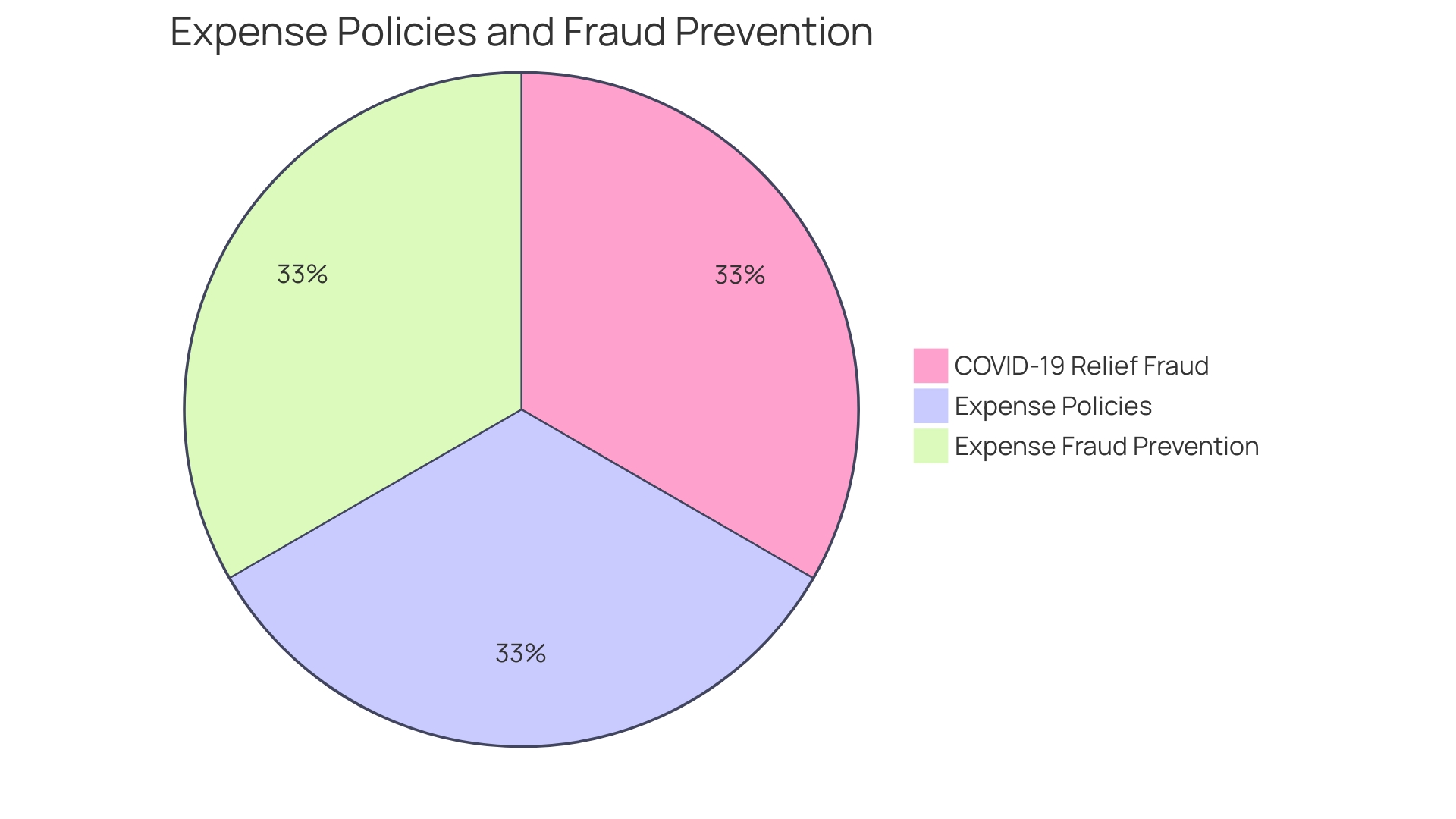
Conclusion
AP fraud poses a significant threat to organizations, draining financial resources and tarnishing reputations. To combat this risk, organizations should establish clear expense policies, provide thorough employee training, and implement robust anti-fraud controls. Technology and data analytics play a crucial role in fraud detection.
Recognizing the red flags of AP fraud is essential. Vigilance in monitoring suspicious vendor behavior, discrepancies in financial records, and the rise in fraud attempts is crucial. Proactive measures, such as enhancing fraud prevention strategies and implementing adaptive anti-fraud controls, are necessary to protect businesses.
Internal controls are critical in mitigating AP fraud. Segregating duties, regular vendor data inspections, and stringent authorization protocols are recommended. Regular audits and continuous monitoring, coupled with advanced technologies like data analytics, enable early fraud detection.
AP automation, powered by AI, is crucial in preventing fraud. It improves efficiency and security by reducing the risk of fraudulent activities. Anomaly detection algorithms, data visualization, and predictive analytics help identify suspicious patterns and transactions, instilling confidence in financial processes.
Educating employees on fraud awareness is paramount. Well-informed employees serve as the frontline defense against deceptive practices. Proactive employee education, incorporating advanced technology and data analytics, equips employees with the necessary skills to detect and report fraud effectively.
Vendor verification and management are vital in mitigating AP fraud. Thorough due diligence, clear policies, and documentation requirements minimize the chances of misunderstanding or intentional deceit. Regular reviews of vendor contracts and performance ensure continuous oversight and improvement.
Implementing stringent audit procedures and continuous monitoring systems is critical in defending against AP fraud. Internal and external audits, combined with data analytics, identify discrepancies early and provide valuable insights. Embracing advanced technology, such as anomaly detection algorithms and predictive analytics, strengthens a company's ability to combat fraud.
In conclusion, organizations must take a proactive approach to combat AP fraud. Clear expense policies, comprehensive employee training, robust anti-fraud controls, and leveraging technology are essential steps. By adopting these strategies, businesses can fortify their defenses against accounts payable fraud, creating a secure and reliable business environment.




